Victorian Ladies Underwear
Victorian Ladies Underwear
.
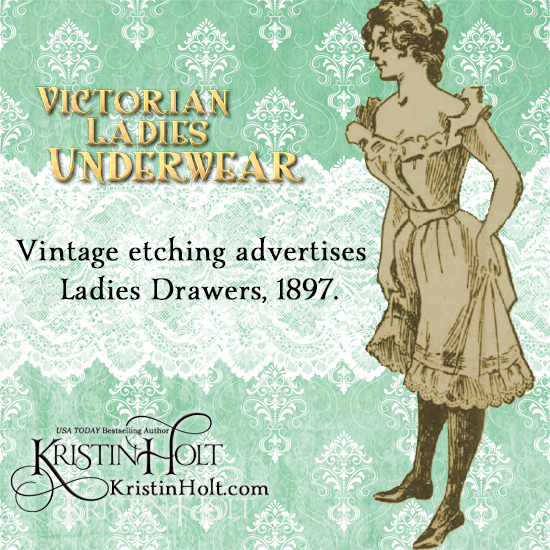
.
Women wore a great deal beneath their gowns in the Victorian Era. Corsets and corset covers. Chemises. More than one petticoat. Bloomers. Bustles or crinolines. Bust improvers or bust ruffles. Garters. Suspenders. Hose supporters. Safety belts. And far more. Some of these contraptions make more sense when ladies undergarments are viewed in context.
.
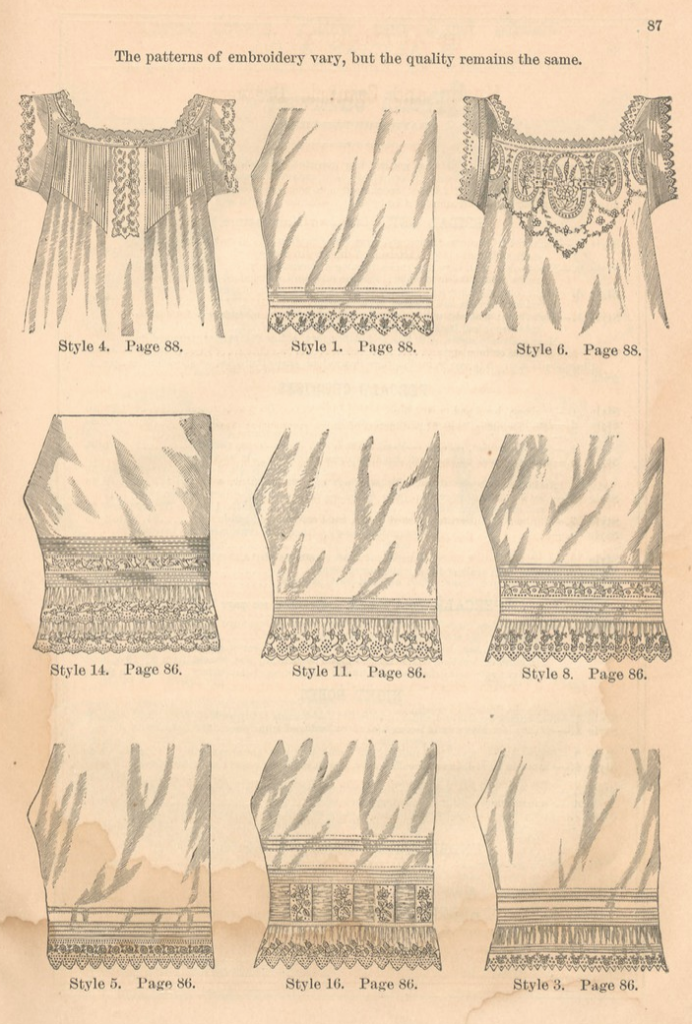
Illustrations of chemises and drawers (with focus on embroidery and tucks) for sale by the B. Altman and Co. Catalogue of New York, Fall and Winter 1879-1880.
.
Victorian Underwear: Drawers, or Bloomers
.
Drawers (ladies underwear) were advertised in the Montgomery Ward Catalogue of 1875. This early mail-order catalog did not have pictures, but mentioned Drawers for sale:
.
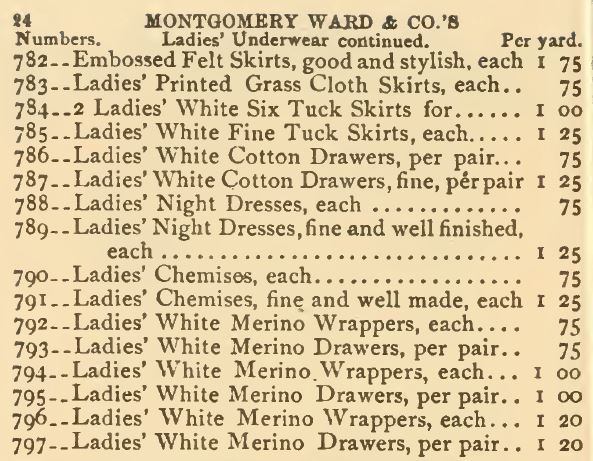
Ladies Drawers for sale in Montgomery Ward & Co. Catalogue, 1875.
.
Prices were essentially the same 20 years later (1895 Montgomery Ward Catalog), but engravings (cuts) illustrated the available products.
.
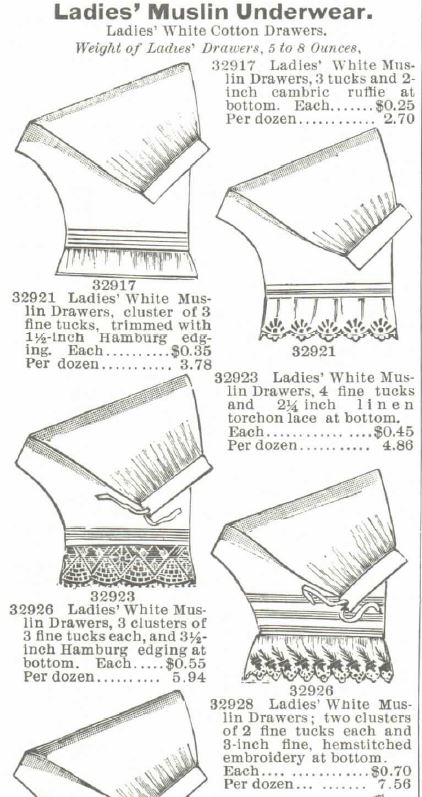
1 of 2: Cotton Drawers for sale in Montgomery Ward Spring and Summer Catalogue, 1895.
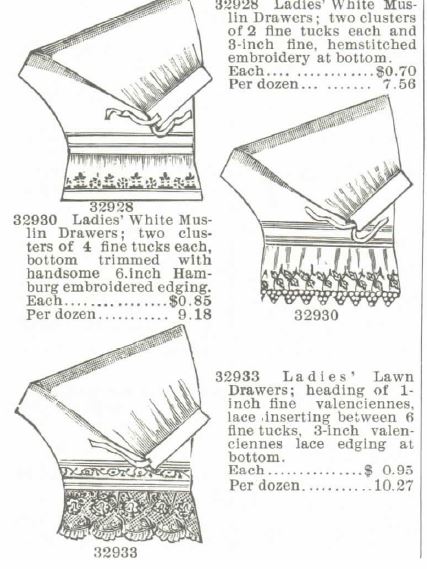
2 of 2: Cotton Drawers for sale in Montgomery Ward Spring and Summer Catalogue, 1895.
.
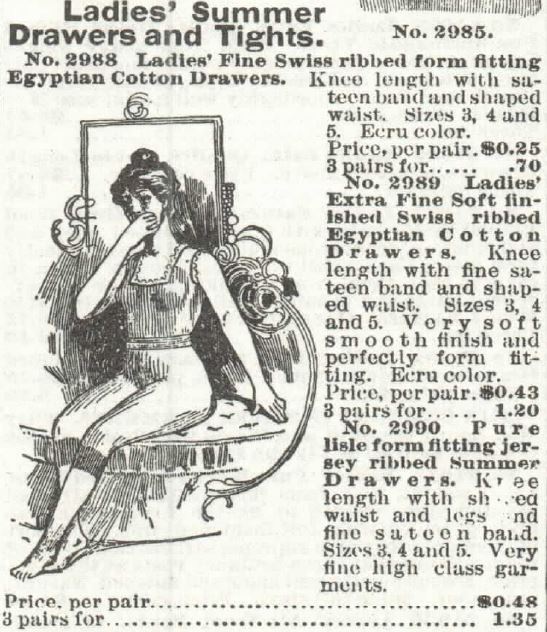
Ladies’ Summer Drawers (form-fitting) and Tights for sale in the 1897 Sears Catalogue.
.
Fabrics
.
You’ll note in the two Montgomery Ward Catalog segments, above, ladies drawers were fashioned out of cotton, Egyptian cotton, jersey ribbed (knit), muslin, lawn, Merino, cambric–as these are both spring and summer editions. Winter drawers were often made of woolen flannel. I can’t imagine wearing wool against my skin, but apparently women used to do so.
.
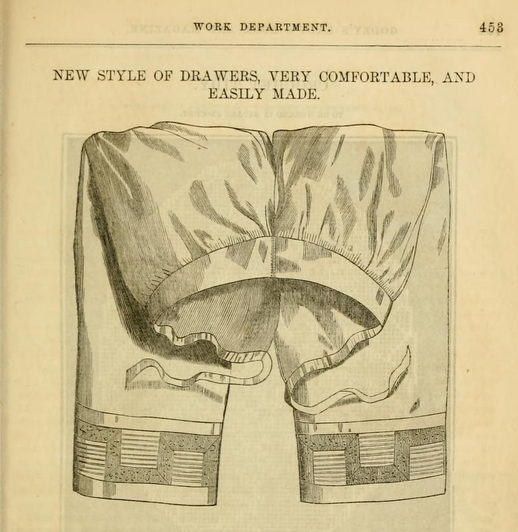
Illustrated “New Style of Drawers, Very Comfortable, and Easily Made.” From Godey’s Lady’s Book and Magazine, May 1861.
.
Design
.
Ladies drawers were made with either a waistband and button or tie closure. Alternately, a simple drawstring. Fasteners were beneath the corset when fully dressed, so undressing, removing the corset, and lowering drawers in the outhouse would have been impractical. To remedy this problem, the crotch was open almost from waistband to waistband.
.
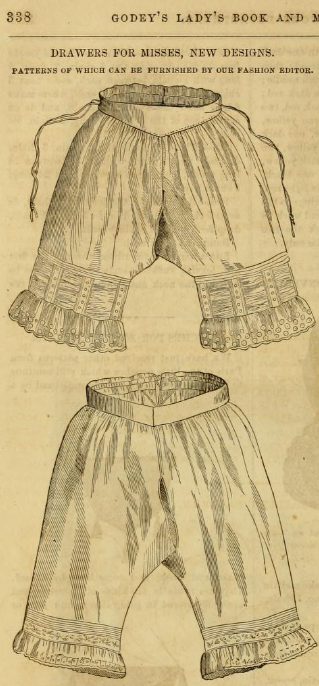
Drawers Designs shown in Godey’s Lady’s Book and Magazine, October 1861.
.
Girls learned to pull up their skirts and hold them out of the way. And also to keep their underthings dry and unsoiled. Upon completing her business, a woman simply fluffed her clothing into place.
.
The open-crotch drawers worked with ‘safety belts’ during menstruation even though the belt was worn over the drawers and likely over the corset.
.
Pretty Matters
.
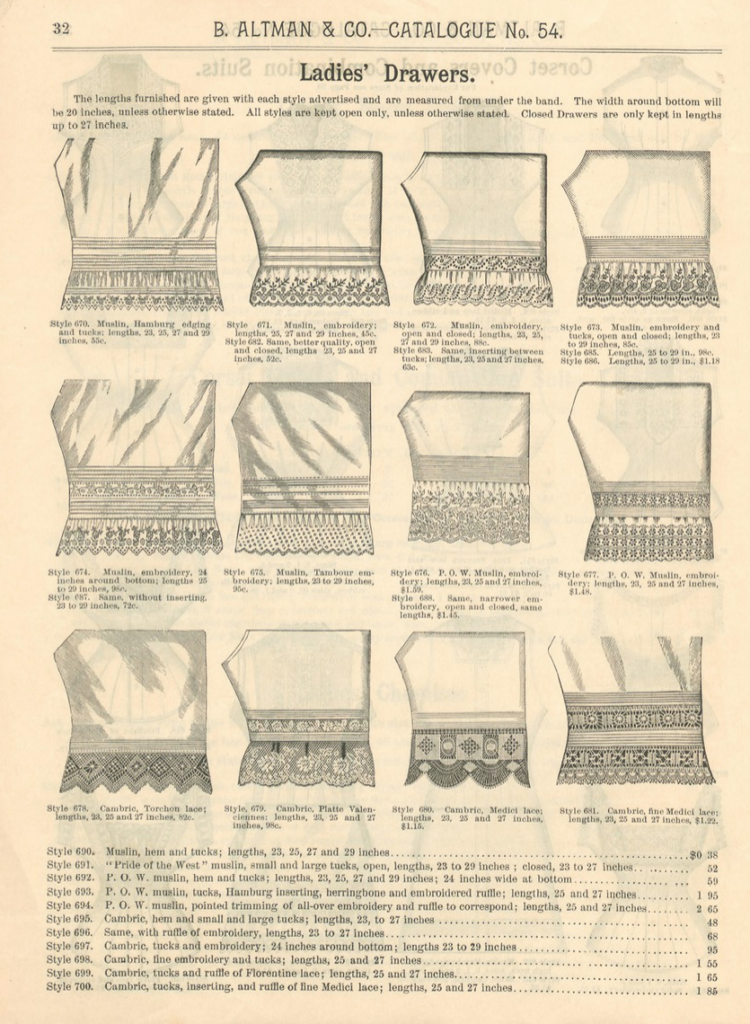
Illustrated lower hems of various ladies drawers offered for sale in B. Altman and Co’s Catalogue (New York), No. 54, Fall and Winter 1886-1887. See B. Altman and Co’s Catalogue, No 52, Spring and Summer 1886.
.
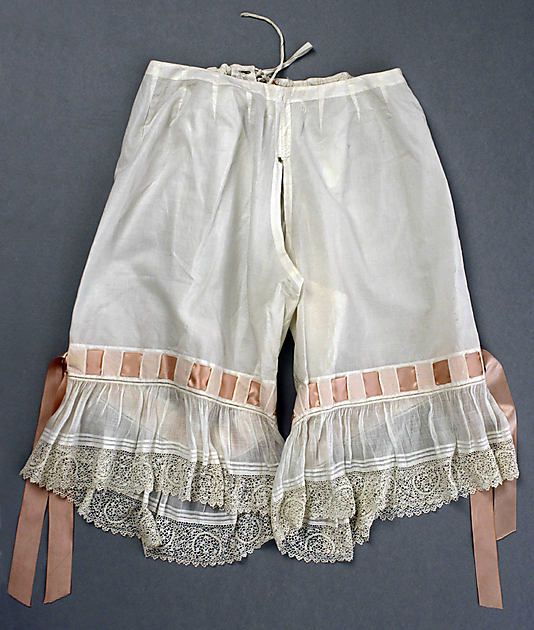
Cotton Drawers, 1890, Pinterest
.
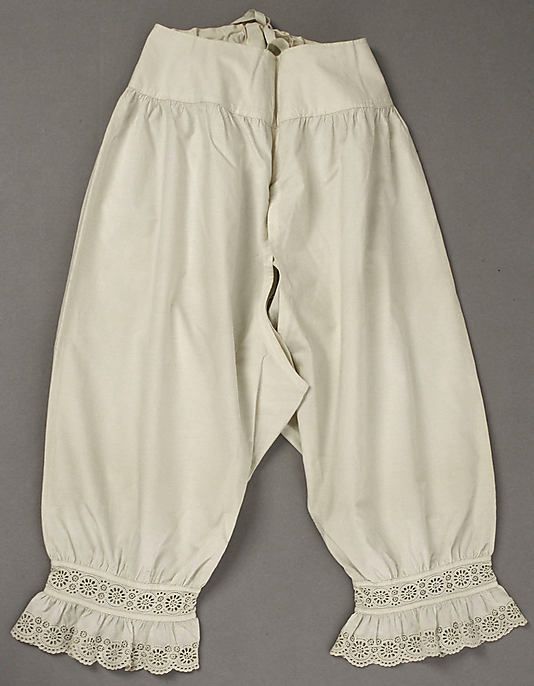
Drawers, circa 1840, from the Metropolitan Museum of Art (via Pinterest).
.
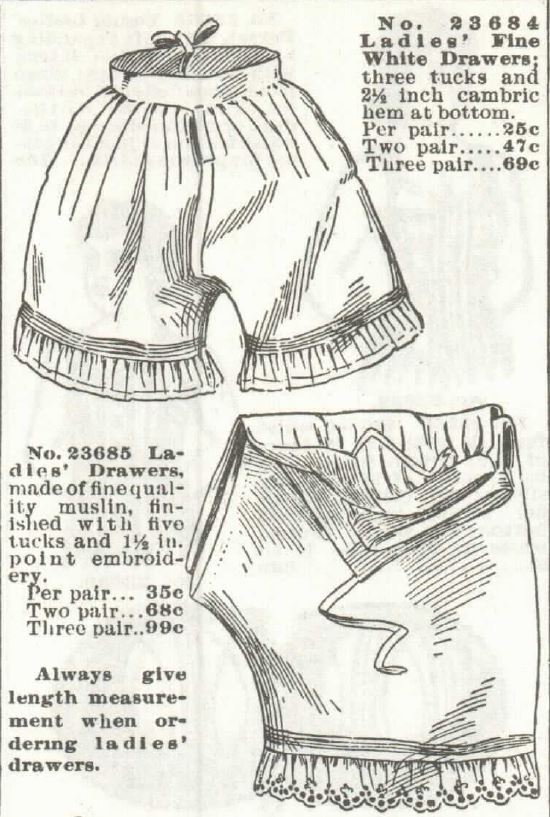
White drawers, shows open crotch construction. Sold in the Sears, Roebuck & Co. Catalogue of Spring and Summer, 1897.
.
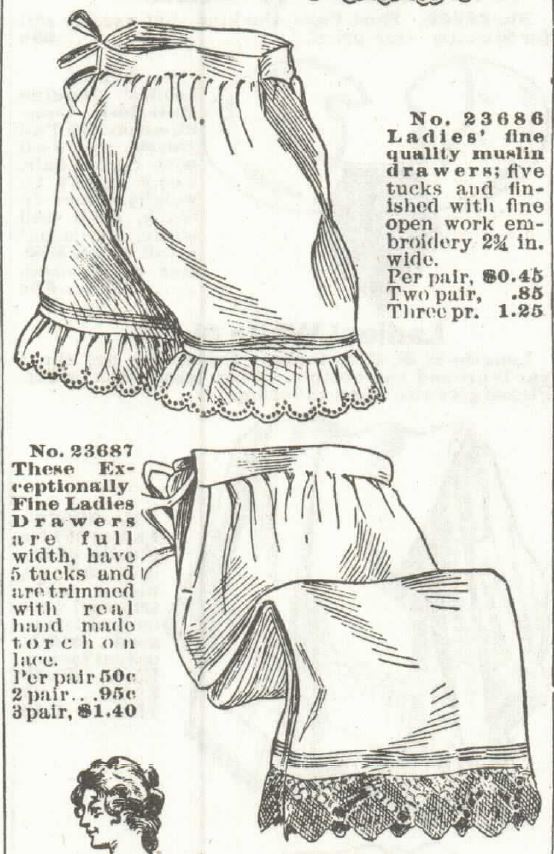
Ladies’ fine quality muslin drawers, and full-width exceptionally fine drawers, for sale by Sears, Roebuck & Co. Catalogue, 1897.
.
Shape
.
It’s apparent, from images of items for sale in the 1890’s, that ladies’ drawers could be very loose in the legs (doubling as a petticoat layer and reducing bulkiness–perhaps in hot weather?) or quite slim-fitting (see the jersey ribbed offering, above).
.
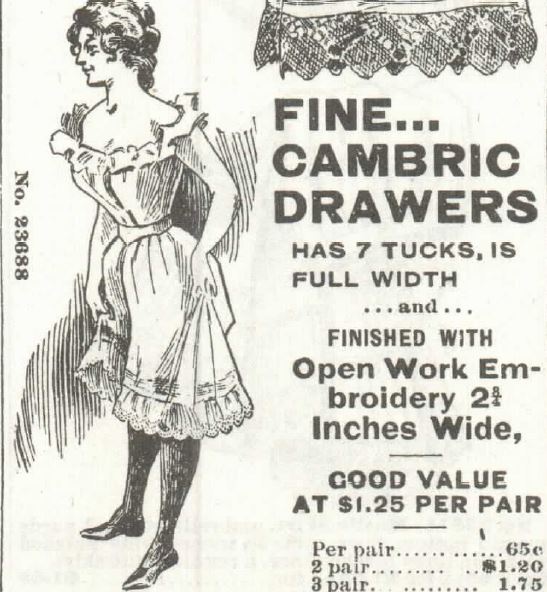
Fine Cambric Drawers with open work embroidery. Sold in the Sears, Roebuck & Co. Catalogue of Spring and Summer, 1897.
.
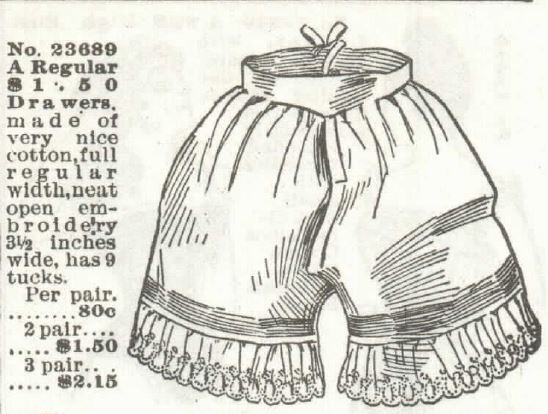
Regular $1.50 Drawers made of very nice cotton. Sold in the Sears, Roebuck & Co. Catalogue of Spring and Summer, 1897.
.
Other examples of nineteenth century ladies’ underpants are far slimmer.
.
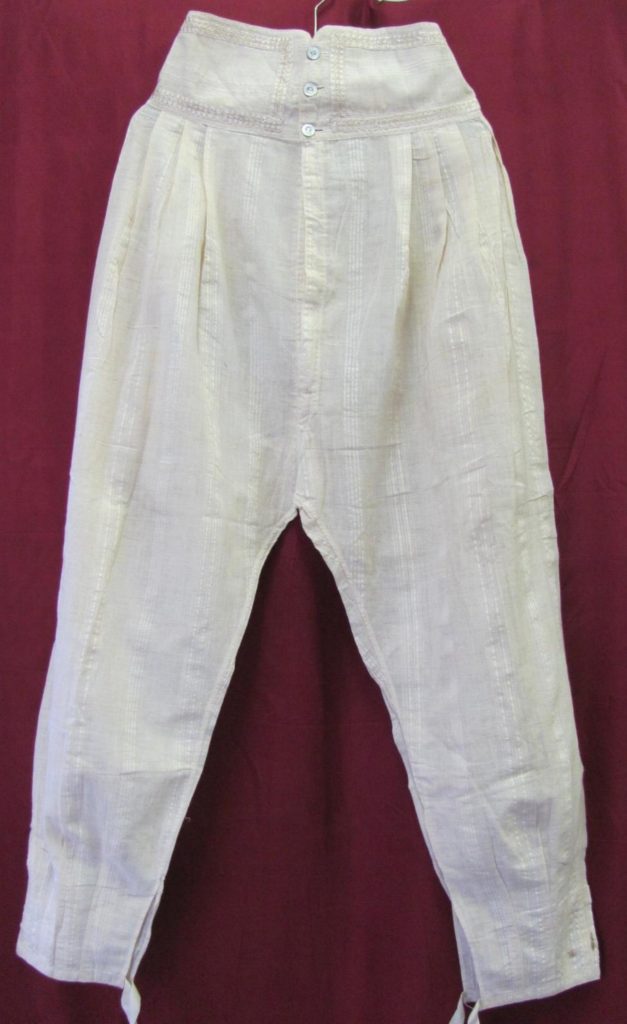
Photo of “antique 19th century Victorian Era ladies long cotton kenar underpants with mother of pearl buttons… Length 44-inches; waist 14-inches.” Sold on invaluable.com.
.
Cold Weather Undies
.
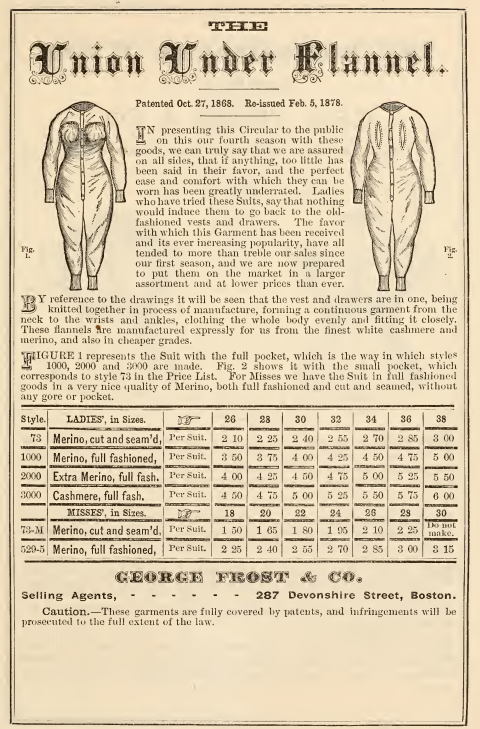
Union Under Flannels for Women, sold in the September 1878 Catalog of Novelties and Specialties in Ladies and Children’s Underwear. Manufactured in Merino wool or cashmere. Note the design to accommodate nursing mothers.
.
Like men, women wore Union Suits when the weather suggested and their dress styles permitted. In an era without central heating, open carriages, and walking most places inside town, it made good sense to layer up and keep warm.
.
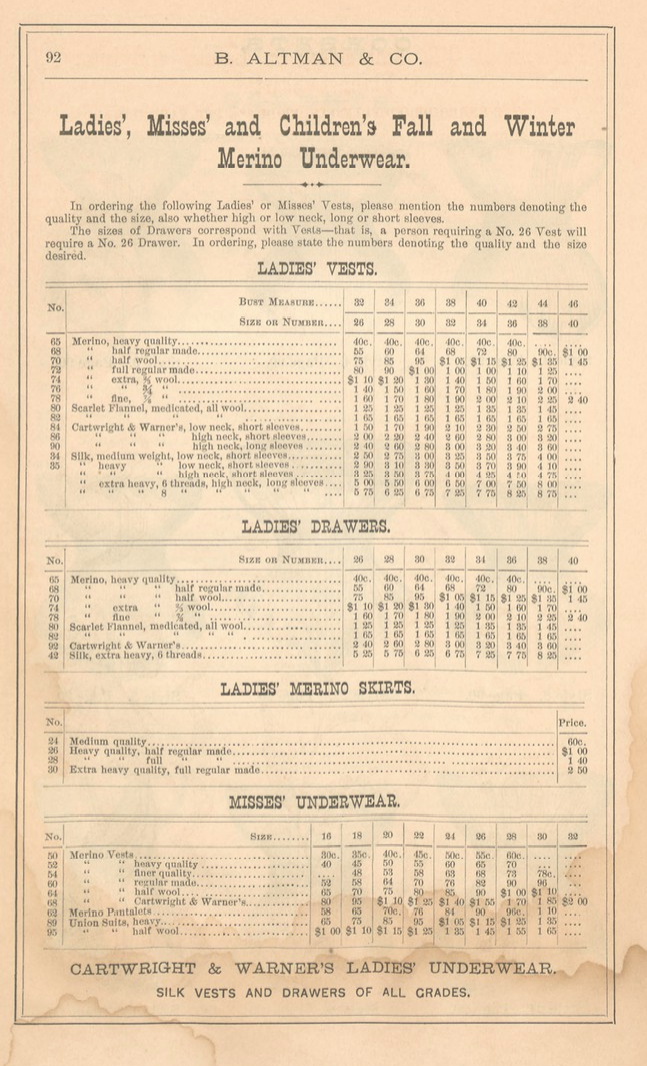
B. Altman & Co. of New York (Fall and Winter Catalogue 1879-80) offers Ladies’, Misses’ and Children’s Fall and Winter Merino Underwear. See categories: vests, drawers, skirts, and “underwear.” Underwear includes vests, pantalets, Union Suits, etc. Note the listing for scarlet flannel, medicated, all wool. Also silk drawers.
.
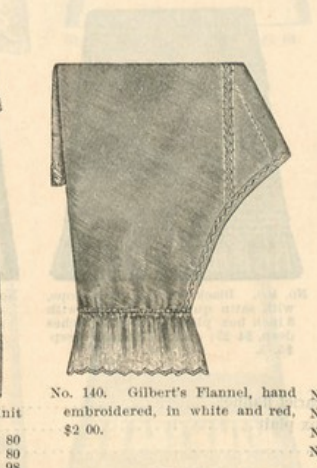
Flannel Drawers for sale in B. Altman and Co. Catalogue No. 54, of New York, Fall and Winter 1886-1887. See B. Altman and Co. Catalogue No. 52, Spring and Summer 1886.
.
Winter petticoats were often made of cotton flannel or wool flannel and well-to-do ladies wore plenty of them on the coldest of days. Beneath all those layers, female Union Suits were today’s equivalent of long (or thermal) underwear.
.
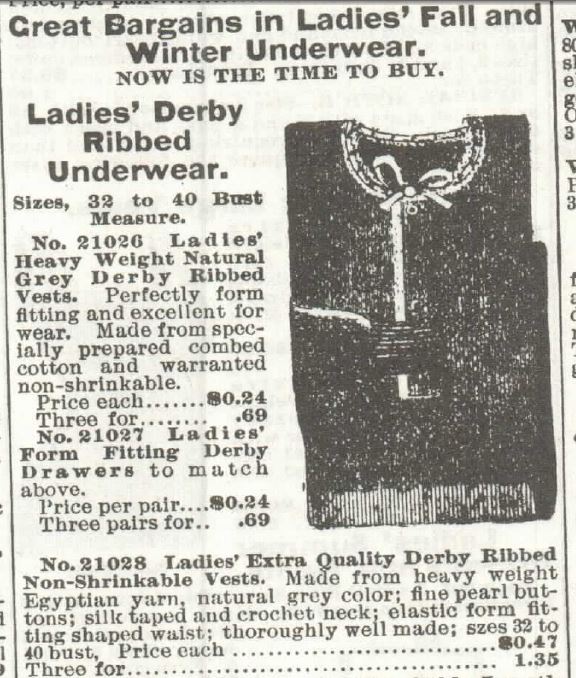
1 of 2: Winter Underwear advertised in Sears, Roebuck & Co. Catalogue, 1897.
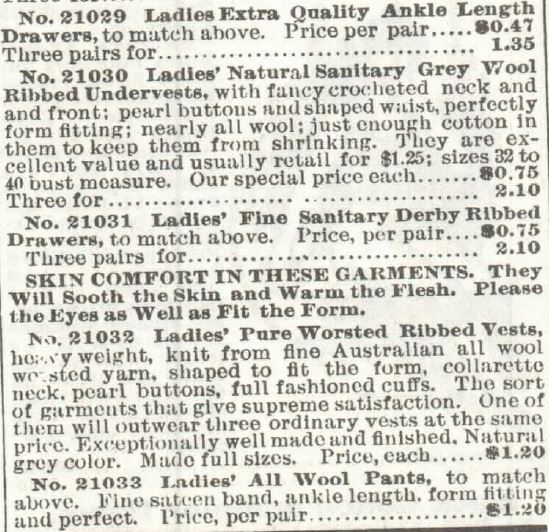
2 of 2: Winter Underwear advertised in Sears, Roebuck & Co. Catalogue, 1897.
.
Note: Union Suits were also a summertime thing–but had short sleeves.
.
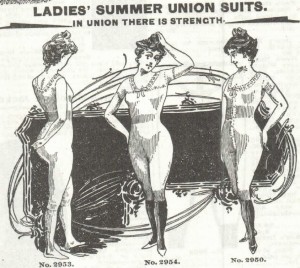
Ladies’ Summer Union Suits (with short sleeves) sold in Sears, Roebuck & Co. Catalogue, 1897.
.
Medicated Underwear
.
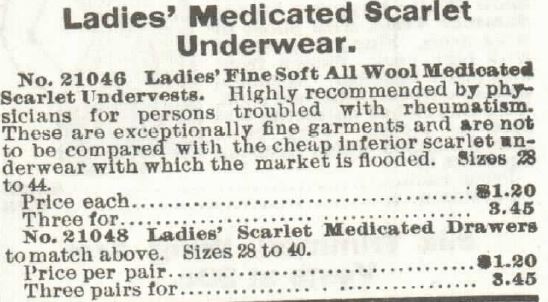
Medicated Scarlet Underwear offered for sale within Sears, Roebuck and Co. Spring and Summer 1897 Catalogue.
.
Why were these “medicated underwear” touted as having benefits for rheumatism? The use of radium in everything from food and water to toys and novelties didn’t begin for another decade… Any ideas? Please scroll down and comment.
.
Related Articles
.
.
Updated April 2022
Copyright © 2016 Kristin Holt LC
Victorian Ladies Underwear

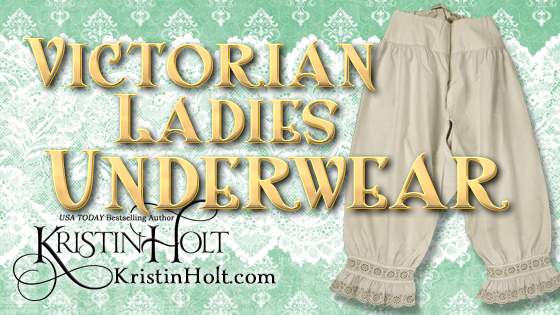
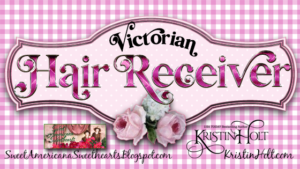


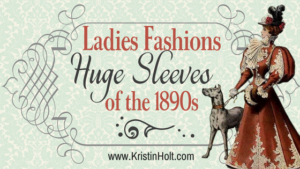
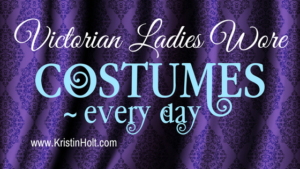
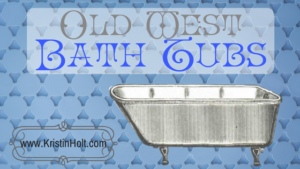
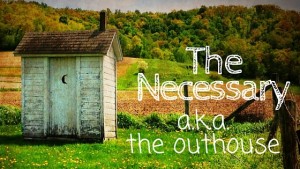
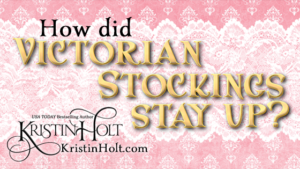

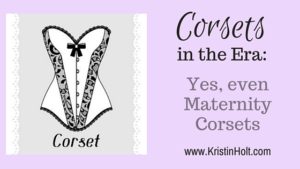
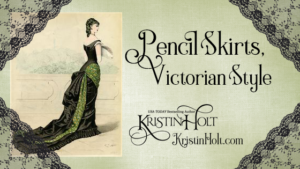




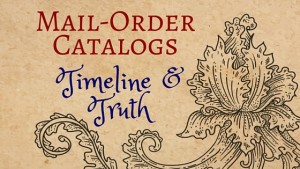

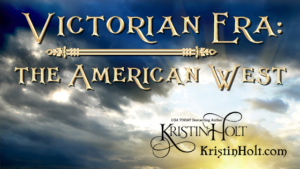







Thanks for another informative article, Kristin. Each of the historical articles you post makes me happy I wasn’t born in the 1800’s but they give me a better understanding of the historical fiction I enjoy reading. Please keep writing more of these posts.
You’re most welcome, Marianne. So glad you’re enjoying. Thanks for making regular visits!
Warm regards,
Kristin Holt
Thank you for your articles. They are absolutely fascinating! I try to imagine myself dressing like this and going through a typical day and it’s a great exercise for the imagination. Also gives me interesting factoids to get my grandchildren ‘s attention lol.
Thank you Sharon! So delighted you dropped by. I’m pleased we share a love of interesting history.
Best,
Kristin Holt
Kristin, this is a very helpful article for those of us who write in this time period. I writer 1870-1890, so this applies to my heroines. I knew about the slit in the drawers but wasn’t familiar with women’s union suits. Thanks.
Hi Caroline,
I’m so glad you found the article helpful, with a bit of new information. Isn’t research fascinating?
Thank you for stopping by and commenting. I appreciate it!
Warm regards,
Kristin
Thank you SO much for this article! I write fanfiction for the 1890s era, so being as accurate as possible makes my writing that much more authentic.
You’re most welcome, Verai.
Hooray for fanfiction! Hooray for 1890s and the accuracy we find as rich textures in the books and stories we love.
Thanks for leaving me a note, Verai. I’m tickled to hear from you.
Happy writing,
Kristin Holt